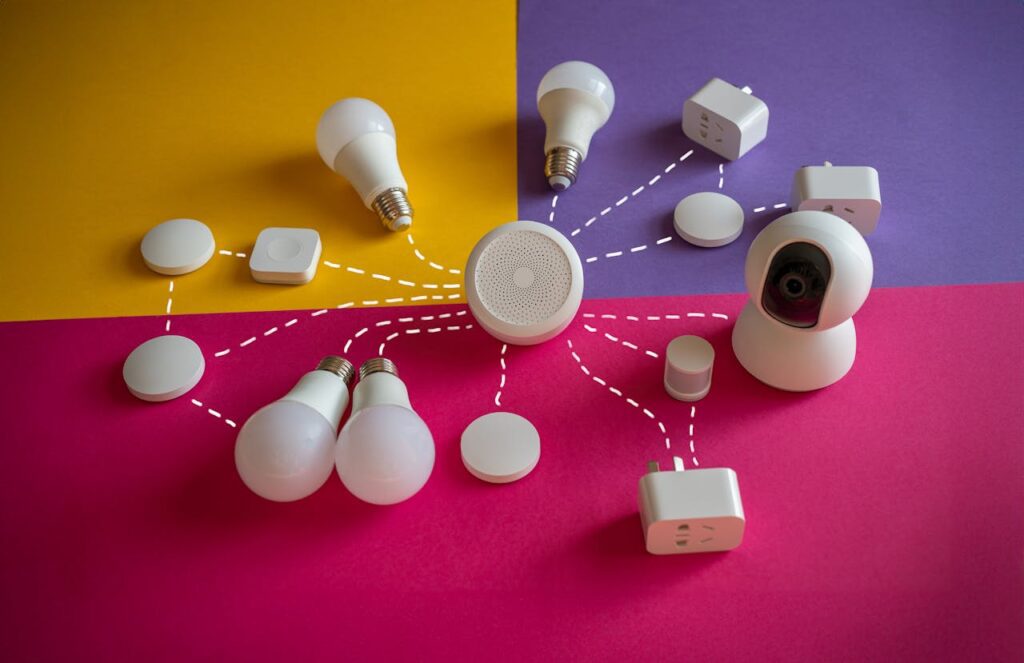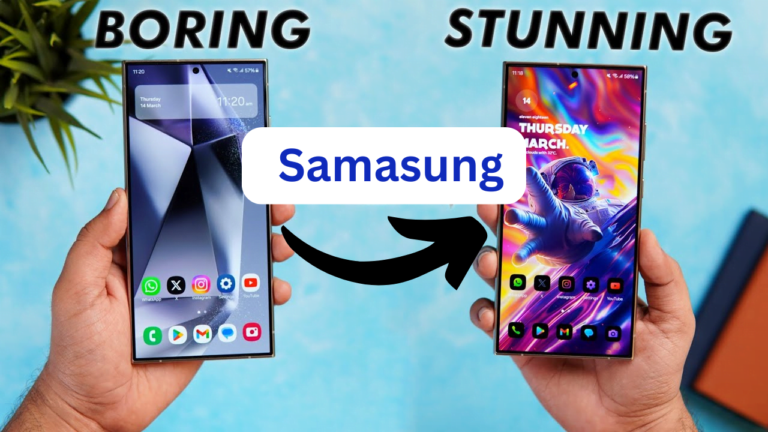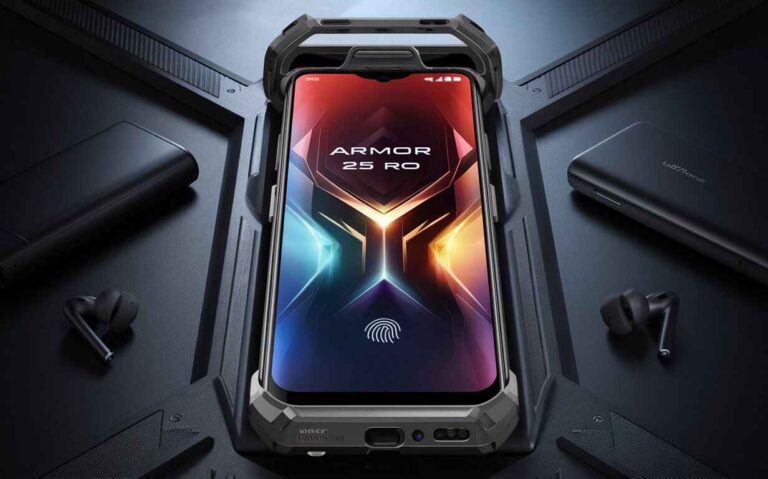IoT Home Security – How Smart Devices Guard Your Castle

Keeping your home and family safe used to mean investing in strong locks, a loud alarm system, and hoping for the best when you were away. But the smart home revolution has transformed residential security into a whole new ballgame – integrating interconnected sensors, cameras, and devices with intelligent monitoring and control solutions right from your smartphone.
Welcome to the new frontier of home protection. Your castle is made truly smart. This long-form guide will explore exactly how Internet of Things (IoT home security) technology has reinvented home security through innovations like real-time motion tracking, preventative hazard detection, advanced AI analytics, and simple remote access.
We’ll review some leading smart security platforms, break down key features, outline the main benefits versus conventional systems, and highlight how complete whole-home interconnectivity unlocks a paradigm shift for protecting what’s most precious. Let’s dive in!
An Introduction to Smart Home Security
Legacy home security systems were fairly one-dimensional – centered around loud alarms, perimeter access gates, and ringing the local security agency if (or more likely when) criminal intruders breached your property line.
But as connectivity has reached even basic household devices, IoT sensors coupled with intelligent analytics have birthed a new generation of smart home platforms that offer far more comprehensive and customized protection.
Modern smart security systems create a seamless web of natively networked devices – including smart hubs and displays, HD cameras, motion sensors, door/window opening detectors plus smoke, CO, and flood sensors. Tying all this together is an intuitive smartphone app that lets users switch between features, receive alerts, pull up live feeds, customize settings, or access controls from anywhere at any time.
Robust analytics and certain automation rules can also be configured by connecting servers so the system effectively behaves like an always-learning guardian angel watching over your home 24/7.
For homeowners frustrated by the inherent limitations and false alerts of conventional security solutions, these centralized smart platforms promise far greater peace of mind during short weekend getaways or extended vacations alike.
With predictive capabilities continuously improving through over-the-air (OTA) firmware updates, smart home security is truly transforming into the intelligent, self-improving fortress of protection for the whole family.
What Makes IoT Home Security So Effective?

Conventional security systems rely on scattered alarm triggers and perimeter cameras coupled with a delayed response from for-hire guards. But smart platforms turn homes into proactive, intelligent monitors that can instantly identify threats, and notify users in real-time, while recording evidence and adapting to risks over time – no human intervention needed.
Here are the core attributes that make IoT-powered security uniquely effective:
Ubiquitous Sensors – Smart motion, entry, smoke, CO, and humidity sensors distributed throughout the home provide ubiquitous visibility of activity so nothing gets missed.
Real-Time Notifications – With sensors and cameras funneling data via high-speed home internet, threats are recognized and send notifications right to user’s smartphones in seconds rather than minutes.
Enhanced Evidence – Multiple HD cameras capturing footage from all angles make identifying and prosecuting intruders easier when the worst happens.
Remote Access and Controls – Users can tap into home systems from mobile devices anywhere in the world – locking doors, and adjusting lights – expanding both security and convenience.
Preventative Warnings – Smart sensors also alert homeowners to temperature fluctuations, leaks, and other anomalies so issues can be fixed before catastrophic damage occurs.
Continuous Adaption – Over-the-air updates mean detection capabilities, situational response, and alarm sensitivities improve continuously to boost security efficacy over time.
Together, these core capabilities enabled by IoT home security connectivity create a uniquely formidable web of security custom-tailored to one’s home. Smart systems provide near real-time visibility, rapid forensic evidence, preventative warnings, and constant software-based improvements that legacy systems simply cannot match.
For tech-savvy homeowners frustrated by past security solutions, smart platforms promise protection like never before. The castle walls are now unequivocally virtual and omnipresent.
Key Smart Home Security Brands and Products
A range of smart home platforms now offer robust IoT home security capabilities using proprietary devices and sensors that can integrate with third-party products using communication protocols like ZigBee, Z-Wave, and Thread.
Let’s examine some leading whole-home security offerings:
Ring Alarm Security Kit
As an Amazon subsidiary focusing squarely on smart security, Ring offers modular, customizable kits encompassing location-specific intrusion and damage prevention. Kits include a base station, keypad, contact sensors, motion detectors, and range extenders that users can set up in minutes. Professional monitoring can also be added seamlessly.
Google Nest Secure
With Google’s deep roots in intelligent software, Nest Secure offers intuitive features like customizable motion detection zones – so pets don’t trigger false alarms. It also has tamper detection preventing criminals from disabling the system during break-ins along with Google Assistant integration. Add-on Nest Cams heighten surveillance.
Arlo Pro 4 System
Focused on easy installation and remote management, Arlo’s wire-free multi-cam setups enable high-resolution interior and exterior video surveillance controlled entirely via smartphones. Local storage or cloud recording options provide forensic video evidence capture if needed.
SimpliSafe
SimpliSafe takes pride in delivering enhanced detection technology like temperature and water leakage sensors coupled with crash and smash protection ideal for glass breakage incidents not covered by competitors. Its app offers low battery alerts and easy monitoring controls from anywhere.
Vivint Smart Home
Uniquely offering professional consultation and customizable installation, Vivint features home automation functionality beyond security – like managing lights, locks, and heating. Vivint’s mobile app gives homeowners a unified command of security settings, energy usage, video feeds, and smart controls.
Common IoT Devices Powering Smart Home Security

As standalone platforms, each smart home ecosystem detailed above comes loaded with its own range of proprietary hubs, cameras, and sensors to form complete end-to-end security solutions.
However, an emerging array of third-party IoT devices focused specifically on core security capabilities are also increasingly integrating with these major smart home platforms using wireless communication protocols.
Here is a primer on key security devices rapidly advancing IoT home security:
Smart Locks – Leveraging keyless Bluetooth, WiFi, or touchscreen entry activated via smartphones, smart locks offer dynamic access control, guest user privileges, and simple remote operation.
Indoor Cameras – Wire-free compact cameras provide expansive interior surveillance with pan/tilt controls, night vision, and local storage or cloud recording options to retain forensic video footage.
Motion Sensors – Passive infrared and microwave motion detectors installed in entryways and hallways provide invisible tripwires sending instant intruder alerts to connected platforms.
Door/Window Sensors – Tiny internet-linked contact sensors installed directly on doors/window frames detect unauthorized access attempts into the home, triggering system-wide alarms.
Floodlights Cameras – Exterior-facing ultra-bright floodlights with 180/360o smart CCTV ensure no corner of the property remains in the dark while capturing clear footage of driveway/lawn activity.
These IoT innovations augment smart security platforms by blanketing homes with near-ubiquitous visibility while enhancing forensic evidence gathering and access control safeguards. They expand the defensive perimeter and boost peace of mind for anxious house owners.
Pros and Cons of Smart Home Security
IoT home security solutions may seem like an obvious upgrade from dated legacy setups, but they come with unique trade-offs to factor in before committing to any platform. Let’s examine some core pros and cons:
Pros:
Cons:
- Real-time visibility and alerts
- Preventative hazard warnings
- Remote access and controls
- Customizable monitoring
- Video evidence and data logs
- Improves continually via updates
- Privacy concerns with video data
- Reliant on consistent WiFi connectivity
- Upfront hardware investment
- Ongoing subscription fees
- DIY installation complexity
- Cybersecurity vulnerabilities
IoT Home Security Pricing Considerations
Integrated smart security packages can cost anywhere from $200 upfront for basic kits to $500+ for higher-tier equipment bundles and professional installation. Ongoing subscription fees for supplementary features like extended cloud storage, video recording, professional monitoring, and tech support average from $10 up to $30 monthly.
However, almost all smart home platforms offer modular hardware scalability from the same brand or third parties – allowing gradual expansion of devices and capabilities over time to fit precise needs and budgets. Free tier options with limited functionality may also be available.
For homeowners simply wanting basic remote access, alerts for doors/motion, and live view into their abode while away, introductory-level smart security kits provide immense value. However, those desiring an expansive recording history, outdoor cameras, and home automation integrations will require higher investment.
Fortunately, almost every system allows transparent pay-as-you-go upgrades. Once the core hub, gateway, and app are set up, enhancing protection is merely a matter of your desired security threshold.
Ultimately striking the right balance between security, privacy, and budget comes down to evaluating your family’s unique needs and tolerance thresholds.
While smart systems require some technical lifting, their unmatched perks around visibility, control, and adaptability check every core box for comprehensive household protection. IoT home security platforms make defending your castle utterly seamless.
Frequently Asked Questions
Here are answers to some common questions homeowners have about smart security capabilities:
How difficult is DIY installation?
Smart home platforms aim for straightforward setups using modular wireless sensors, step-by-step user guides, and built-in testing diagnostics that require no expert aid in most cases. However, larger properties may benefit from professional consultation.
Can systems detect threats without WiFi?
Backup cellular/LTE connectivity ensures real-time monitoring and alerts continue uninterrupted even during internet outages. Battery-powered sensors also keep collecting core activity data offline to sync when connections are restored.
Are smart devices prone to hacking?
While no connected system is fully immune, smart home security platforms implement robust end-to-end data encryption, two-factor authentication, and software security protocols to minimize risks. Reputable platforms publicly disclose vulnerability responses.
Can pet movements trigger false alarms?
Improved motion detection and on-device AI in modern sensors apply size, speed, shape, and route mapping analytics to differentiate between pets and human intruders minimizing false alerts. Users can also designate activity zones.
Is recorded data securely stored?
Video feeds and sensor logs are encrypted both locally and in transit to cloud servers to prevent leaks, hacking, and unauthorized viewing. Data access is restricted to the household owner through strict authentication protocols for privacy.
Do devices continue working during power failures?
Smart devices with rechargeable battery backups or cellular data connections keep security controls, connectivity, and real-time notifications running for hours even when electricity is disrupted in the home.
The Future of Smart Home Security
With smart home shipments globally on track to top $157 billion over the next 3 years, it’s clear IoT-powered whole-home security systems are just getting started transforming our expectations of modern protection.
As edge computing brings more on-device intelligence, 5G, and new wireless protocols accelerate system-wide connectivity while blockchain enables decentralized security, smart home platforms will continue advancing predictively and proactively.
Expect capabilities like pattern detection across sensor data to anticipate emergencies before they occur or drones and robots assisting home monitoring to become a reality before long. Owners might even receive security health reports benchmarking their household protection against neighborhood baselines!
Ultimately the promise of smart dwellings is not just defending brick and mortar, but optimizing and maximizing enjoyment of one’s abode. After all, the home is so much more than just a castle – it’s our happy place. Smart systems will ensure that security enables joy rather than impedes it.The troops guarding your castle have arrived. Rest easy now.






